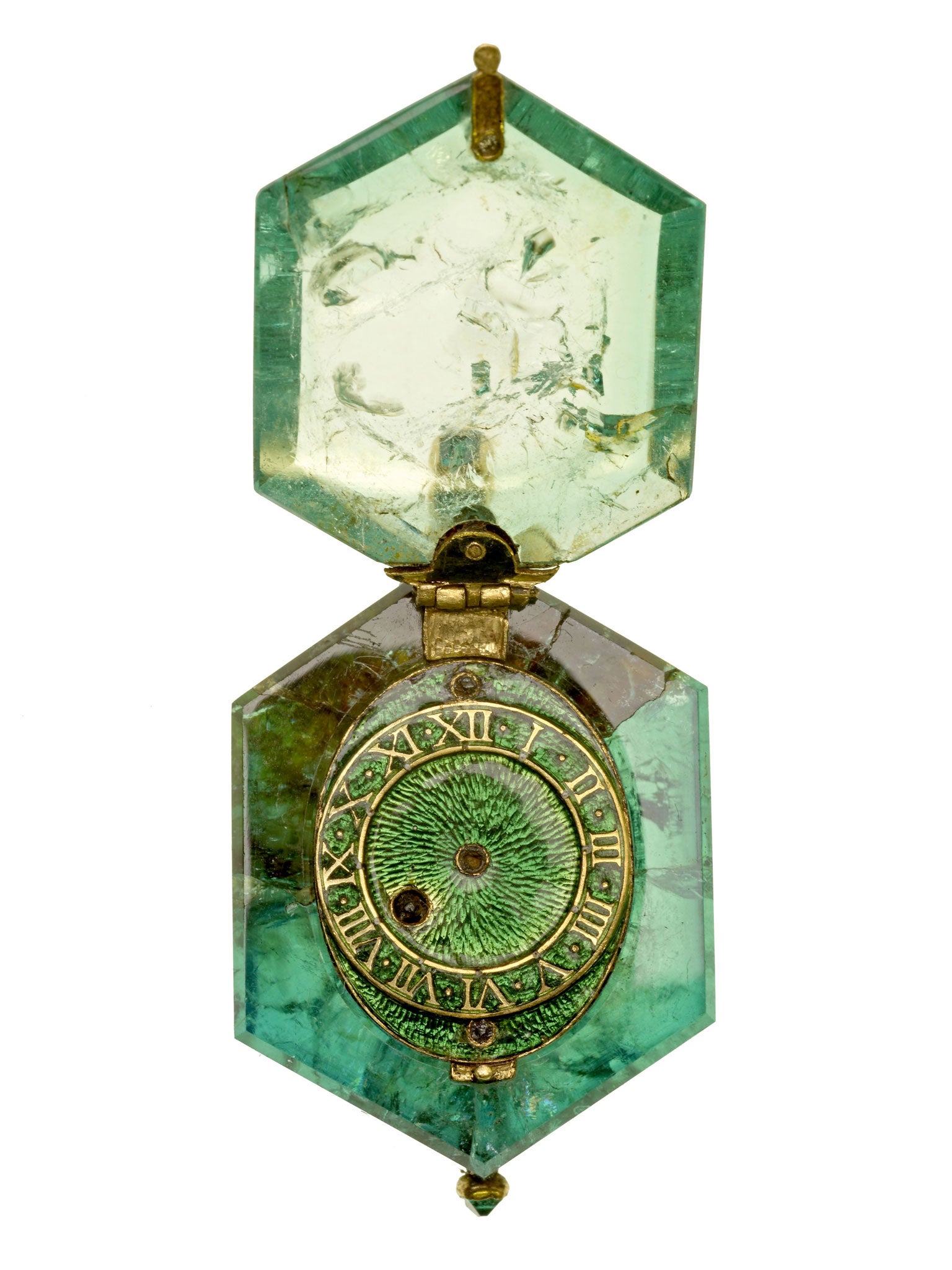Who stashed the Cheapside Hoard? Exhibition sheds new light on 'most important' collection of Elizabethan jewellery ever discovered

Your support helps us to tell the story
From reproductive rights to climate change to Big Tech, The Independent is on the ground when the story is developing. Whether it's investigating the financials of Elon Musk's pro-Trump PAC or producing our latest documentary, 'The A Word', which shines a light on the American women fighting for reproductive rights, we know how important it is to parse out the facts from the messaging.
At such a critical moment in US history, we need reporters on the ground. Your donation allows us to keep sending journalists to speak to both sides of the story.
The Independent is trusted by Americans across the entire political spectrum. And unlike many other quality news outlets, we choose not to lock Americans out of our reporting and analysis with paywalls. We believe quality journalism should be available to everyone, paid for by those who can afford it.
Your support makes all the difference.Just over a century after the “world’s most important” hoard of Elizabethan jewellery was discovered by chance in a cellar in London, experts have uncovered important information that may lead to unravelling the mystery of who put it there and why.
The collection of 500 pieces of jewellery, which is being brought together for the first time by the Museum of London, may have been hidden by goldsmiths heading off to fight in the Civil War which started in 1642 or fleeing the conflict abroad. It also links the treasure trove to an individual for the first time.
Hazel Forsyth, curator of the exhibition The Cheapside Hoard: London’s Lost Jewels “The intrigue surrounding this whole collection is who buried it, when and why it was buried and what it signified. Pinning down the date helps in pinning down possibly who might have put it together and speculating on what prompted them to do that.”
Click here or on "View Images" for more pictures
She continued: “There’s a lot of scope for research, and I hope the exhibition will prove a catalyst to launch it on the international stage, and get scholars from around the world - where the gems came from - working on it. Perhaps we will get further towards answering some of the more tricky questions.”
The discovery of a gemstone dubbed the “Stafford intaglio” has allowed experts to date the hoard for the first time. The gem, engraved with the heraldic badge of William Howard, the only Viscount Stafford, narrows the date down to between 1640 and 1666.
While he may not have buried the treasure, the jeweller may well have bought up some of the family’s collection.
Ms Forsyth said: “It is regarded as the single most important find of its type in the world.” The find, which includes necklaces, rings, Byzantine cameos and a one-of-a-kind emerald watch from Columbia, has since led to documentary research uncovering much more about the people who lived in the properties where the hoard was found.
“They were all practising jewellers and goldsmiths,” Ms Forsyth said. “The likelihood is they buried it below the cellar floor because, simply that was safest thing to do.”
“One possibility is the civil war. A large number of goldsmiths and jewellers went to be soldiers and the trade was severely affected,” she said, adding others would have gone abroad.
Something must have happened to the person who buried the hoard, as they never came back for it: “Their secret perished with them.” While the buildings were destroyed by the Great Fire of London, the cellars survived.
“The gem material comes from all over the world and underlines London’s international trade network which was very sophisticated,” Ms Forsyth said.
“The hoard also shows us the technical skills and styles of cutting we’re not really able to reproduce today. Partly because of the gem material they had available but also the years of handed down knowledge and tradition.”
The hoard was found in 1912 after workmen demolished a series of buildings in Cheapside, London. The area in the 17th century was known for its jewellery shops.
The workmen hid the treasures in their pockets, handkerchiefs and caps and took it to a man called Stoney Jack. He “literally went on a pub crawl offering the work men a shilling or half a pint. It was the best thing he had ever found in investigating London,” Ms Forsyth said. Lord Harcourt, a founder of the London Museum, instructed him to buy the workers out.
Join our commenting forum
Join thought-provoking conversations, follow other Independent readers and see their replies
Comments